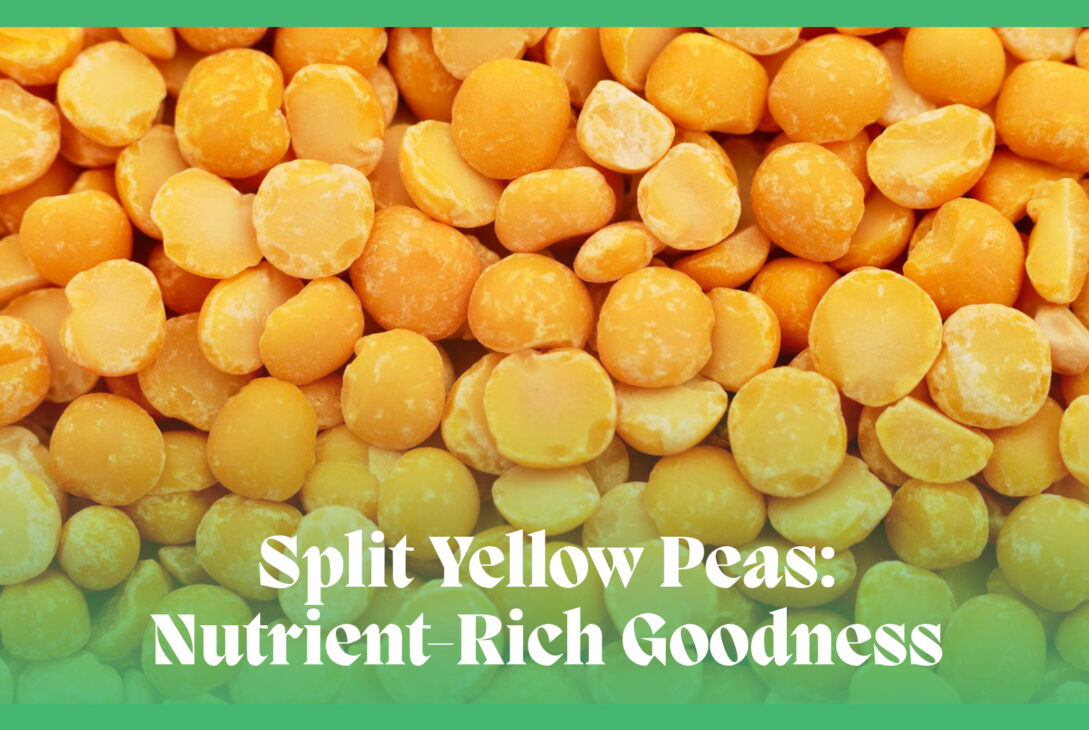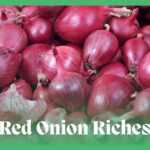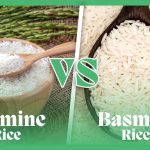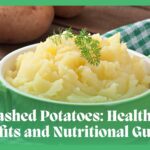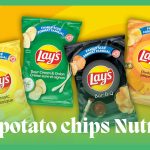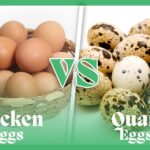Prepare yourself for a pleasant excursion into the world of split yellow peas, scientifically known as Pisum sativum var. macrocarpon. Split yellow peas are more than simply a pantry staple thanks to their cheery demeanor and adaptability; they’re the golden key to a world of culinary possibilities.
Imagine a modest legume possessing a kind heart. From the pea plant, split yellow peas have a mild, nutty flavor and a silky texture. What distinguishes them? For generations, people have treasured these little marvels due to their exceptional nutritional value as well as their delicious flavor.
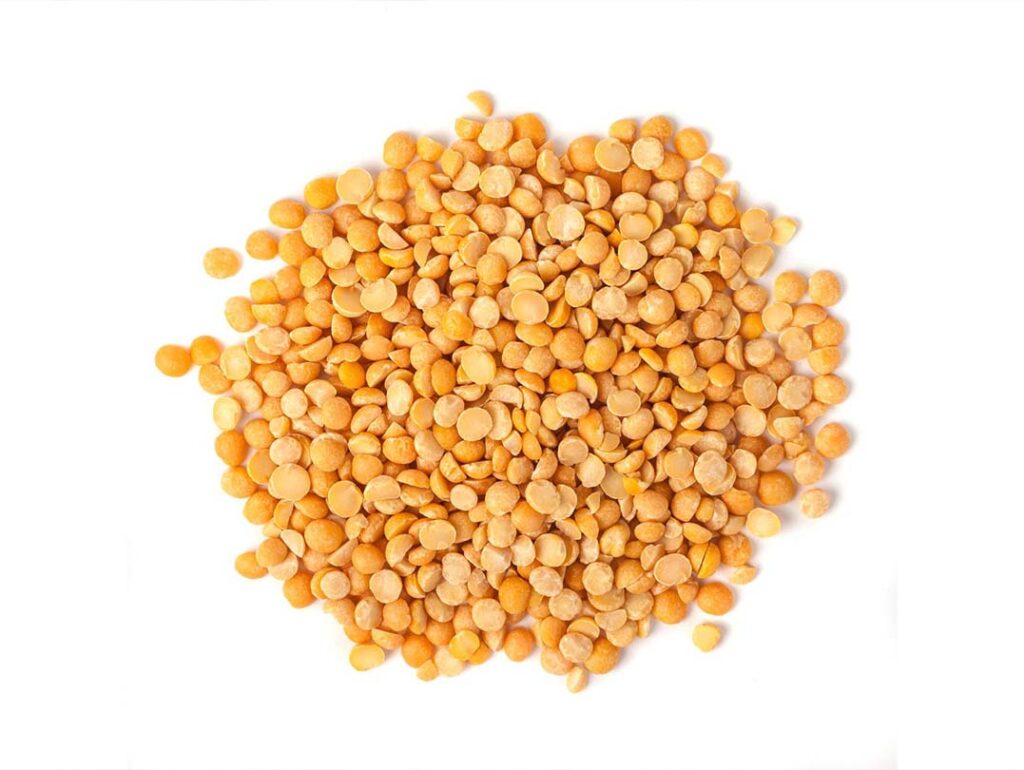
Culinary uses:
Split yellow peas have taken center stage in kitchens all across the world, appearing in everything from heartwarming soups to mouthwatering stews. They are a flexible complement to a variety of meals since they absorb flavors with ease. These peas give a splash of color to any dish, whether they are mashed into a hearty dip or mixed into a crisp salad.
Significance of nutritional content:
Beneath their golden skin is a nutritious powerhouse just ready to boost your health. Split yellow peas are full of critical vitamins, fiber, and protein, and they provide a nutritious addition to any diet. Knowing the nutritional value is essential to realizing the possible health advantages that these peas may offer. It’s not simply a question of curiosity. Now let’s get started and learn the Sunshine Pulse’s mysteries!
Nutritional composition:
In addition to tasting great, this lowly bean has an amazing nutritional profile. Cooked split yellow peas are a great option for vegetarians and vegans since they are high in plant-based protein (16 grams per serving).
The 16 grams of fiber encourage healthy digestion and fullness, and the low glycemic index guarantees a mild effect on blood sugar levels. These peas are not only a great source of protein but also a rich source of micronutrients, including vitamin K, iron, magnesium, and potassium, as well as a variety of B vitamins.
| Nutrient | Amount per 1 Cup Cooked Split Yellow Peas |
|---|---|
| Protein | 16 g |
| Carbohydrates | 41 g |
| Fiber | 16 g |
| Total Fat | 1 g |
| Saturated Fat | 0 g |
| Monounsaturated Fat | 0.1 g |
| Polyunsaturated Fat | 0.4 g |
| B1 (Thiamine) | 0.4 mg |
| B2 (Riboflavin) | 0.2 mg |
| B3 (Niacin) | 2.1 mg |
| B6 (Pyridoxine) | 0.2 mg |
| Vitamin K | 8.5 mcg |
| Iron | 2.5 mg |
| Magnesium | 71 mg |
| Potassium | 355 mg |
| Phosphorus | 194 mg |
| Zinc | 1.5 mg |
Role in human nutrition:
Let’s discuss some of the prominent benefits split yellow peas provide:
Heart health:
Split yellow peas are unsung champions in the heart health arena, providing benefits beyond reduced cholesterol and support for blood pressure. Antioxidants, including flavonoids and carotenoids, which are abundant in these legumes, have been linked to cardiovascular protection.
By preventing oxidative stress, antioxidants lower the risk of heart disease. (1) Furthermore, split yellow peas’ high fiber content enhances lipid profiles and helps control cholesterol levels, both of which are factors in heart health. (2)
Digestive Health:
The fiber included in split yellow peas contributes to weight control in addition to promoting regular bowel motions. Increased satiety from high-fiber diets may help regulate appetite and stop overeating. (3) Split yellow peas are a great complement to a comprehensive strategy for digestive health because of their ability to both promote weight control and encourage regularity in the digestive system.
Reduces risk of Type 2 diabetes:
Because split yellow peas affect insulin sensitivity, they provide additional advantages for blood sugar stabilization. Studies suggest that adding beans to the diet might improve insulin sensitivity, which may lower the incidence of type 2 diabetes. (4) For this reason, split yellow peas are a good choice for both diabetes management and as a prophylactic against the illness’s onset.
Weight Management:
Split yellow peas’ protein and fiber mix makes them a valuable ally in the fight against weight gain. While fiber gives meals more volume without adding extra calories, protein encourages feelings of fullness and lower total calorie consumption. This pair helps with calorie control and feelings of contentment, which both contribute to weight loss attempts. (5)
Reduces risk of chronic diseases:
Phytic acid and lectins, two substances found in split yellow peas, may help with better nutritional absorption. In certain situations, phytic acid may prevent the body from absorbing minerals. Still, it can also function as an antioxidant and has been linked to a lower risk of developing several chronic illnesses. (6) Pea lectins may have immunomodulatory effects, among other possible health advantages. (7)
Adverse effects:
Apart from the crucial role of split peas in human nutrition, they do possess side effects as follows:
Gout Concerns:
Split yellow pea consumption may need to be restricted in people with gout or a history of kidney stones. Purines, which are found in several legumes, can be converted into uric acid. Elevated uric acid levels have been linked to kidney stone development and gout episodes. (8)
Overconsumption associated with mineral deficiencies:
Anti-nutrients included in split yellow peas, such as lectins and phytic acid, can obstruct the absorption of minerals like zinc and iron. While these substances may also be beneficial to health, long-term mineral deficits may result from overindulging in them. (9)
Digestive discomfort:
Although the high fiber content of split yellow peas is good for digestive health, a sudden increase in fiber consumption might cause upset stomach and gas. The oligosaccharides in peas aren’t completely broken down in the small intestine and make their way to the colon, where they ferment and release gas. (10)
Allergic reactions:
Split yellow peas should be consumed with caution by those who are allergic to legumes. From minor symptoms like swelling and itching to severe reactions like anaphylaxis, allergic reactions can take many different forms. (11)
Methods to reduce anti-nutrients:
Soaking and sprouting:
Legumes such as split yellow peas can have their anti-nutrient levels reduced by soaking and sprouting. Enzymatic activity is triggered by these mechanisms, which degrade substances such as phytic acid. By increasing nutritional bioavailability and lowering anti-nutrient concentration, this enzymatic process makes nutrients easier to access and absorb.
Combining complementary foods:
Split yellow peas can be strategically paired with complimentary meals to prevent their anti-nutrient effects. For example, eating foods high in vitamin C together with split yellow peas will improve iron absorption, offsetting any possible disruption from anti-nutrients.
Choosing varieties with lower levels:
Preventive measures include selecting split yellow pea types with naturally reduced amounts of anti-nutrients. Certain cultivars have undergone selective breeding to reduce their anti-nutrient content, rendering them a more favorable option for people who aim to reduce their consumption of anti-nutrients.
Boiling and cooking:
Boiling and cooking are two basic cooking methods that can help reduce the quantities of anti-nutrients. These techniques aid in the breakdown of some anti-nutrients in legumes, although they are not as successful as soaking or fermentation. Furthermore, removing the water used for boiling or soaking can further lower the amount of anti-nutrients.
Fermentation:
One age-old technique that is well-known for lowering anti-nutrients is fermentation. Beneficial microorganisms can enzymatically break down anti-nutrients such as lectins and phytic acid present in fermentation, such as lactic acid bacteria. Anti-nutrient levels may drop, and nutrient availability may increase when split yellow pea products are consumed.
Dietary considerations:
Setting off on a voyage of culinary discovery? Don’t worry—split yellow peas have you covered! These adaptable legumes are like culinary chameleons, easily fitting into different diet plans. Split yellow peas, which provide a plant-based protein boost, are a favorite among vegetarians and vegans living more environmentally conscious lifestyles. And you know what? With their gluten-free passport, they are a secure sanctuary for anyone who avoids gluten.
Split yellow peas are, therefore, your go-to allies for tasty, inclusive, and thoughtful eating, whether you’re preparing a filling stew, a salad bursting with protein, or a gluten-free culinary adventure.
To put it briefly, split yellow peas are nutrient-dense powerhouses that provide a wealth of health advantages. These golden marvels add more to your plate than simply a taste explosion since they are loaded with fiber, plant-based protein, and a source of vital vitamins and minerals.
In summary, they support blood sugar regulation, intestinal health, and heart health. This is your invitation to accept split yellow peas as your culinary allies in creating a well-balanced diet. Allow these beans to brighten soups, salads, and other dishes, elevating your meals.
They’re more than simply an ingredient thanks to their high fiber content, low cholesterol, and adaptability—they’re a nutritious discovery! Split yellow peas are a healthy food that may infuse your body with vigor and health with every bite. To a glorious journey of well-being!
References:
- https://doi.org/10.1161/CIRCULATIONAHA.110.968735
- https://doi.org/10.1093/ajcn/69.1.30
- https://doi.org/10.1111/j.1753-4887.2001.tb07001.x
- https://doi.org/10.3390/nu7125509
- https://doi.org/10.3945/ajcn.114.084038
- https://doi.org/10.1093/jn/135.6.1393
- https://doi.org/10.1080/17450390903020422
- https://doi.org/10.1016/s0002-8223(02)90346-9
- https://doi.org/10.1021/jf60232a049
- https://doi.org/10.1201/9780429057465
- https://doi.org/10.1016/j.jaci.2010.03.029

